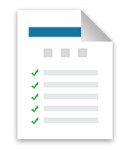Healthcare organisations have an obligation to provide a high-quality resuscitation service, and to ensure that staff are trained and updated regularly to a level of proficiency appropriate to each individual’s expected role.
As part of the quality standards for cardiopulmonary resuscitation practice and training this document provides lists of the equipment and drugs required for cardiopulmonary resuscitation in primary care. This document is referenced from, and is a component of, the Quality standards for cardiopulmonary resuscitation practice and training for primary care.
The core standards for the provision of cardiopulmonary resuscitation across all healthcare settings are described in:
Introduction and overview Quality standards for cardiopulmonary resuscitation practice and training
Back to contents
November 2013, updated March 2018


